Otherskin Review
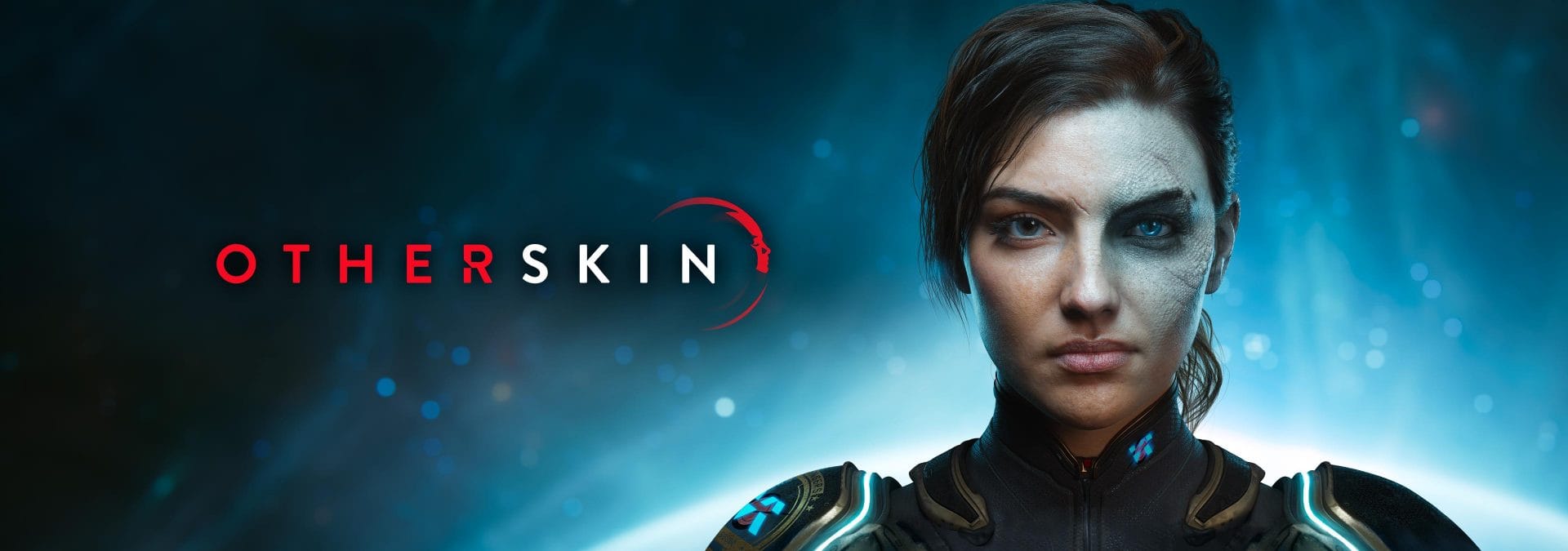
Every once in a while, a game comes along that reminds us of an older era of creativity in gaming where ambition often outpaced technical limits. Otherskin is one of those titles. It feels like it was pulled straight out of the early 2000s, from the PS2 and GameCube era, where charm and experimentation mattered more than polish. It’s visually captivating, rich with ideas, and filled with intriguing mechanics, but unfortunately, those same ambitions are buried beneath a layer of bugs, performance issues, and repetitiveness.
Still, there’s something hauntingly beautiful about Otherskin, a game that strives for greatness even when it stumbles.
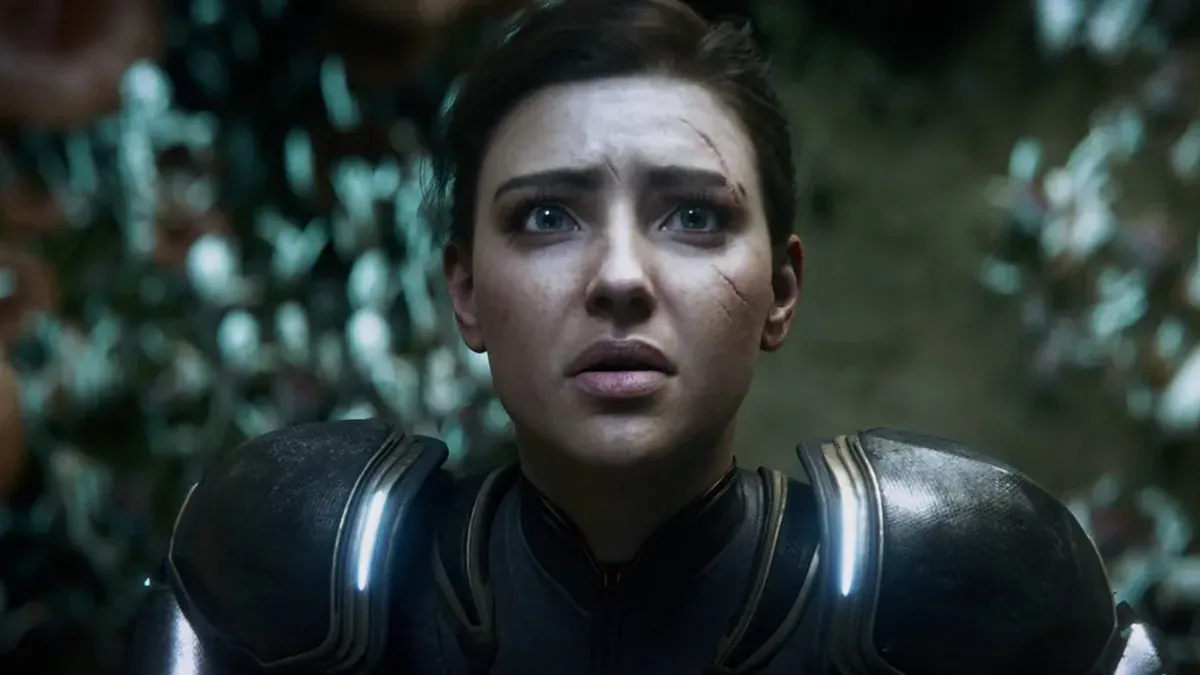
A Universe Consumed by Corruption
Otherskin wastes no time pulling you into its grim setting. The universe is being devoured by a mysterious force known as the Corruption, an all-consuming plague that infects everything in its path. You play as Alex, a volunteer or perhaps a sacrifice sent on a one-way mission to the planet Vandermire. Her job is simple: gather as much intel as possible before the Corruption inevitably claims her.
What starts as a doomed reconnaissance quickly evolves into something greater. After crash-landing on Vandermire, Alex discovers that she can absorb the spirits of fallen enemies and transform them into new powers called Morphs. This twist redefines her purpose and turns her from an expendable scout into humanity’s last sliver of hope.
It’s a classic sci-fi setup, filled with atmosphere and tension, and while the story isn’t particularly original, it does a good job setting the stage for the gameplay that follows. Unfortunately, the narrative never reaches its potential; it’s serviceable but lacks the emotional depth or surprise to truly stand out.
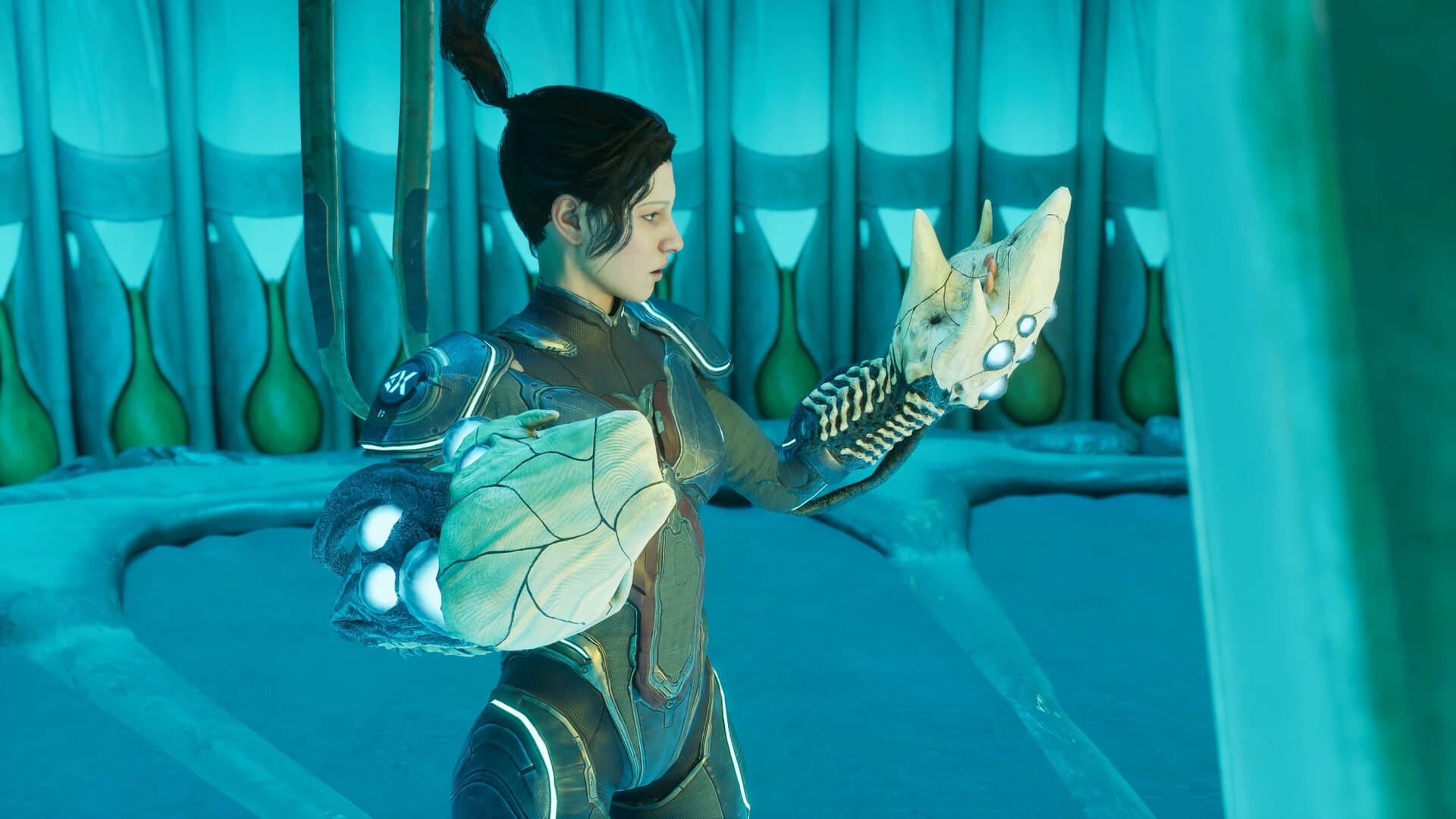
Morphing Mechanics and Exploration
The Morph system is where Otherskin shines brightest. Each Morph ability you absorb gives you new ways to interact with the environment and battle enemies. You can sprout wings to glide across gaps, use a tongue-like grappling appendage to swing from ledges, or summon an energy shield to deflect attacks. These abilities aren’t just cosmetic additions; they meaningfully alter how you explore Vandermire’s world and tackle challenges.
Each Morph feels creative, and the sense of progression tied to unlocking them is genuinely rewarding. They’re also seamlessly woven into the game’s puzzle-solving and platforming, giving exploration a Metroidvania-like feel as you revisit areas with new abilities to uncover secrets.
The world of Vandermire itself is striking. The colour palette bursts with alien hues and bioluminescent detail, giving each biome its own identity. The level design is smart and diverse, filled with winding paths, vertical climbs, and hidden corners that encourage curiosity. Even the enemies, twisted, insectoid creatures warped by the Corruption, are visually impressive and distinct from one another.
It’s in these moments that Otherskin feels at its best: creative, vibrant, and adventurous.
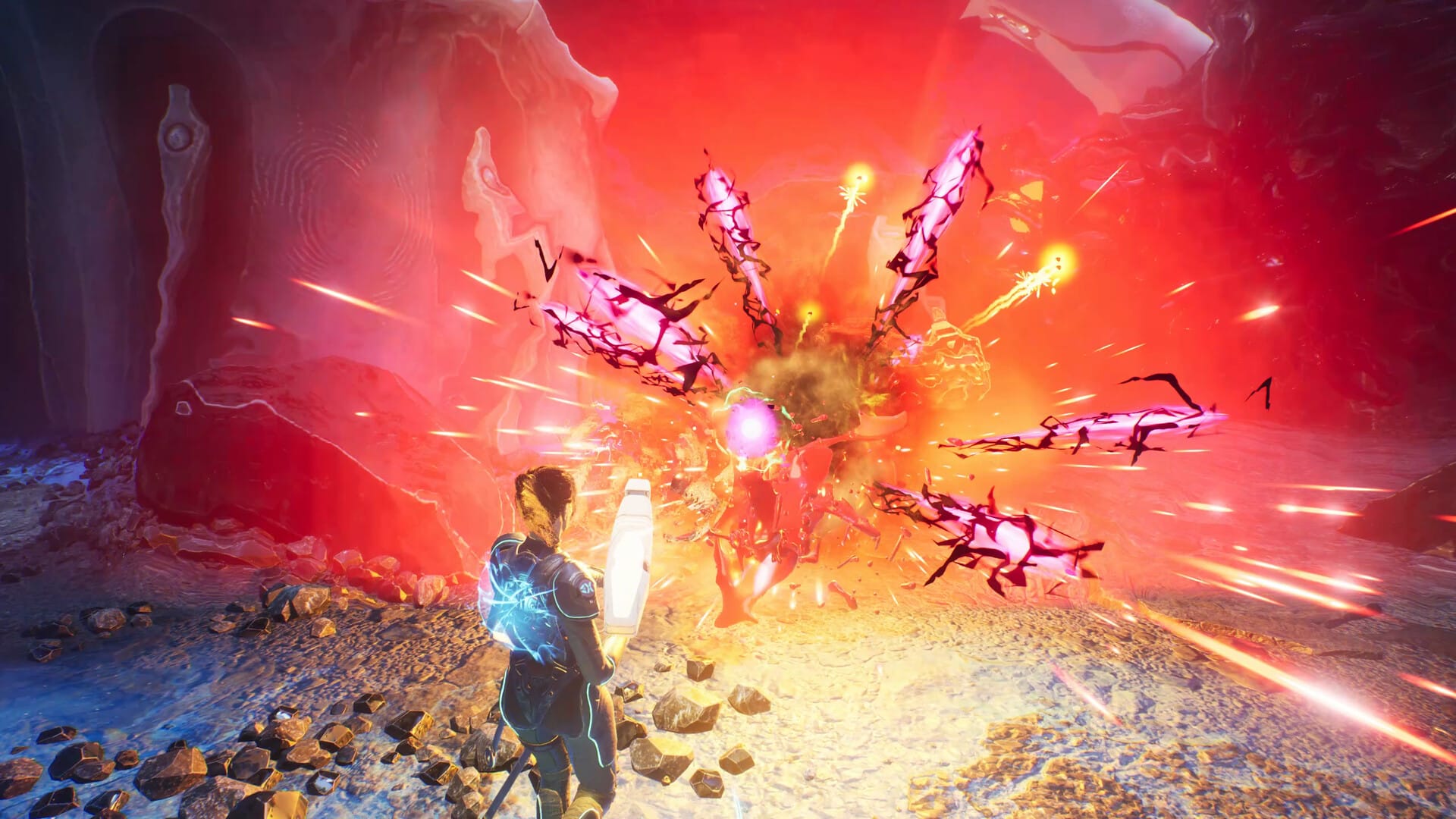
Combat and Upgrades
Combat in Otherskin is a blend of ranged shooting and melee fighting, and the two systems complement each other nicely. Guns feel powerful, and melee strikes carry a decent amount of weight. You can switch between both styles fluidly, and the ammo system cleverly encourages aggression; firing consumes energy that recharges faster when you attack enemies up close.
The weapon upgrade system is straightforward but effective, offering a clear path to improving your tools and combat efficiency. The sound design adds a satisfying crunch to every encounter, and the voice acting delivers a grounded sense of urgency during firefights.
However, once the novelty wears off, the cracks begin to show. Combat quickly becomes repetitive, relying on the same mix of encounters across multiple zones. You’ll often face identical enemy waves or even fight the same bosses again with little variation. The hit detection can be inconsistent, making some fights feel unfair, and invisible walls or poor collision detection can break the flow of battle.
Even with its creative mechanics, Otherskin’s combat loop feels stretched thin by the end.

Visuals, Sound, and Presentation
On a purely visual level, Otherskin is impressive. The alien landscapes are beautiful and eerie, with glowing vegetation, strange architecture, and haunting weather effects. The cutscenes are cinematic and well-directed, while the soundtrack enhances the game’s melancholy tone with ambient, otherworldly music.
The voice acting is solid across the board, lending life to Alex and her AI companion. Though the dialogue can feel a bit stiff at times, it’s clear that the performances were handled with care. Combined with the sound design, which captures everything from the crackle of gunfire to the haunting echoes of Vandermire’s wilderness, the atmosphere is one of Otherskin’s greatest strengths.
This is a game that knows how to look and sound good. Unfortunately, its presentation is undermined by one major issue: performance.
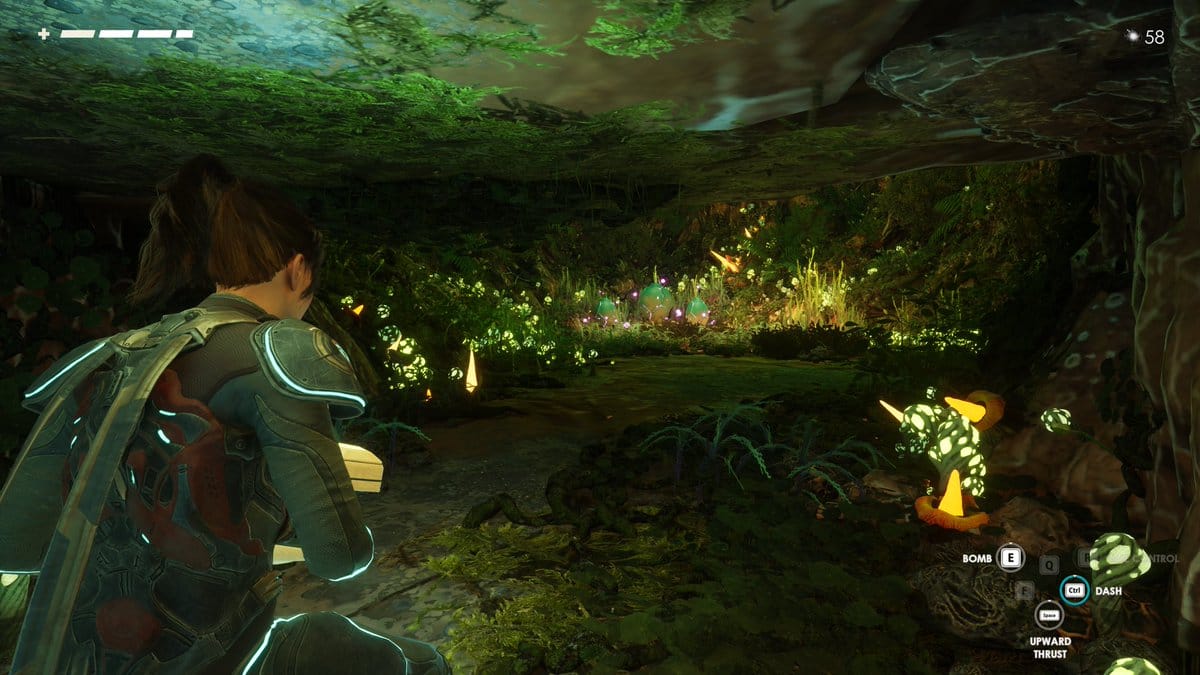
Optimization Woes and Technical Issues
For all of Otherskin’s visual beauty, it’s one of the least optimized games I’ve played this year. Even on solid hardware, the game suffers from frequent stutters, random freezes lasting up to five seconds, and occasional crashes that completely break immersion.
Some bugs are amusing, like repeated voice lines that echo endlessly during cutscenes, but others are game-breaking. Respawn points can be unreliable, sometimes placing you in hazardous areas that lead to instant death. Invisible walls and random geometry collisions make exploration frustrating, especially when trying to test your new Morph abilities.
The overall experience feels unpolished, as if the game needed a few more months of optimization. When the performance issues aren’t getting in the way, Otherskin can be mesmerizing, but when they are, it becomes a chore to play.

The Story That Could Have Been
While the premise of Otherskin is intriguing, the story ultimately falls short of its potential. It sets up a fascinating universe, but the narrative beats are predictable and lack emotional depth. The pacing doesn’t help either, as too many sections drag on with repetitive combat and simple objectives that don’t push the plot forward.
Still, Alex is a likable protagonist, and her interactions with the AI companion add a layer of humanity to the bleakness of Vandermire. There’s a sense that Otherskin’s story wanted to be something greater, but it never quite reaches that level.

Otherskin is a fascinating mix of creativity and chaos. It has the soul of a classic adventure, with inventive mechanics, gorgeous environments, and a clear passion behind its design. The Morph system, voice work, and world-building are all commendable, and there’s an undeniable sense of artistry in how it blends combat, exploration, and atmosphere.
But the game’s poor optimization, repetitive structure, and technical problems hold it back from greatness. When it works, it’s captivating. When it doesn’t, it’s frustrating.
For players nostalgic for the PS2 and GameCube era of experimental action games, Otherskin might still be worth a look, especially if the developers patch the performance issues. Until then, it’s a rough but intriguing sci-fi adventure that shows flashes of brilliance buried beneath the corruption.
Otherskin delivers strong world design, striking visuals, and fun morphing mechanics that feel pulled from the golden age of adventure gaming. But severe optimization problems, repetitive combat, and unpolished gameplay prevent it from reaching its full potential. If patched, it could become a cult favourite for now, it’s a beautiful but broken journey.
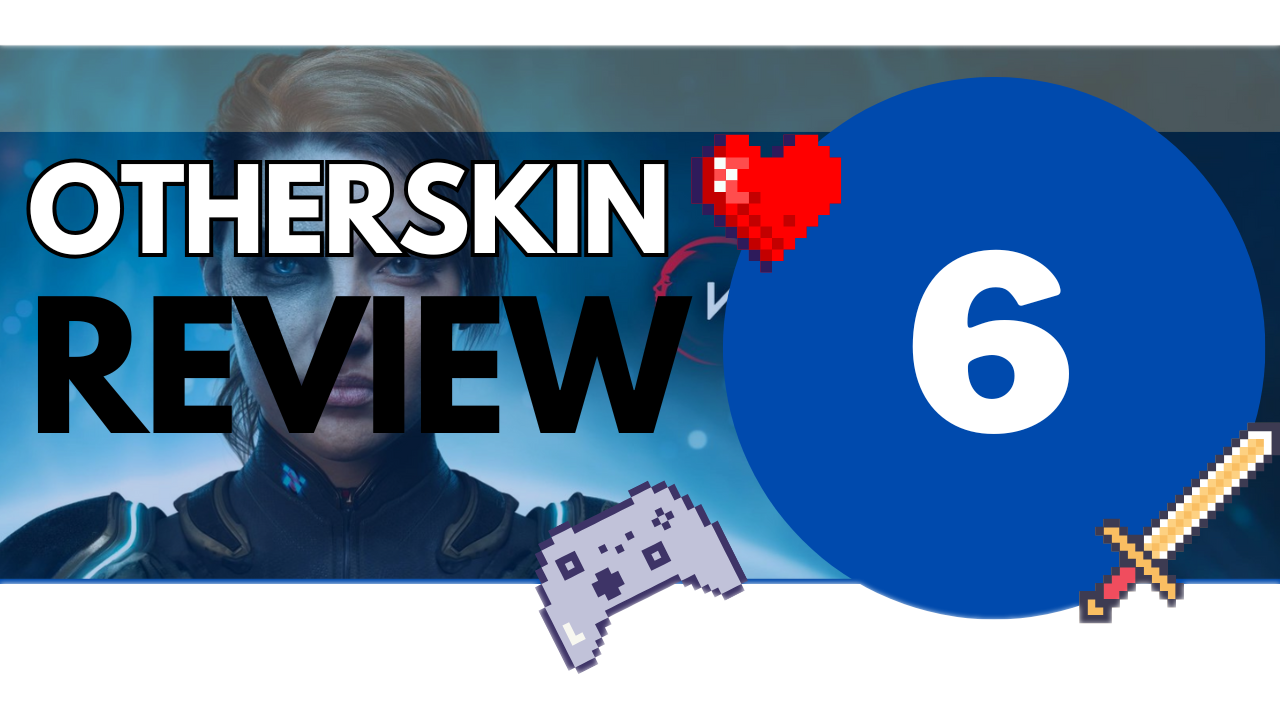
Reviewed on PC
